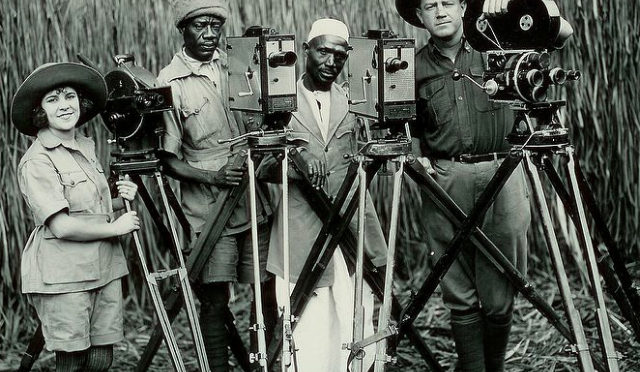The art of the documentary has been much debated and analysed in recent years, but the motives driving the documentary-maker are not so often discussed, perhaps because they are assumed to be self-evident. Robert Flaherty, the documentary maker who is the subject of this film, emerges as a complex personality motivated by a mixture of impulses: curiosity about primitive societies, love of adventure, and the ambition to succeed in a competitive industry. He had a love-hate relationship with Hollywood and its values, despising its taste for sensationalism and its profit-driven ethos, yet at the same time remaining fascinated by the glamour of show business.
He appears to have been a charismatic and gregarious personality, somewhat paradoxically for someone whose early life was spent exploring the sparsely-populated wastes of Canada, armed with an early movie camera: a pioneer in both the literal and metaphorical senses. He made his name in 1922 with the hugely-successful Nanook of the North, and (funded by his wealthy wife’s fortune and with her collaboration) went on to build a reputation as both inventor and master of his chosen form, the new one of ethnographic documentary. Despite modern accusations of exploitation, however, it appears that the communities and individuals Flaherty filmed were in fact eager collaborators in the process of filmmaking, keen to tell their own stories and to use the new medium to document their heritage, often recording traditions that were vanishing even at the point of being captured on camera.


The photo that accompanies this piece is of Osa and Martin Johnson, not Robert Flaherty.